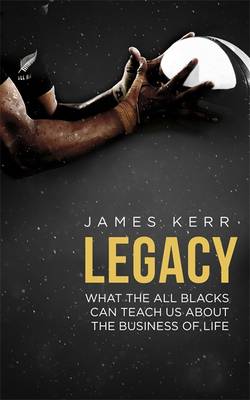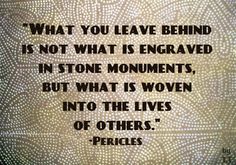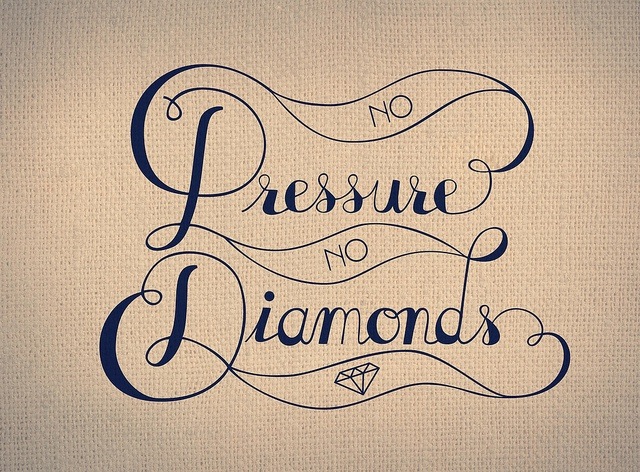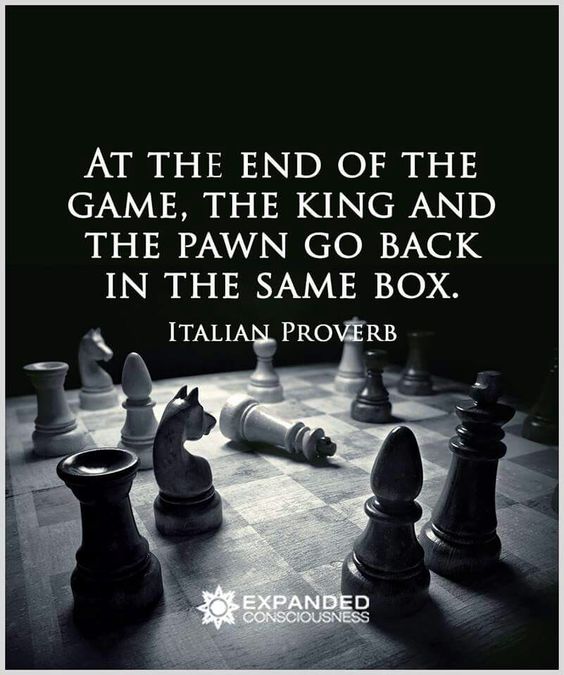When I first decided to start writing my blog, the idea was never to do anything other than give myself a platform that would keep a record of my learning and personal development. By making it public, my thought was that it would help keep me accountable to ‘someone’ other than myself, thus improving my motivation and compliance. In addition, I thought it was a bit selfish and wasteful to keep the fruits of my research to myself, given that others might benefit from the library of work I was compiling. Never did I expect to reach over 70,000 people around the world each month.
Over the last year, my life has changed and whilst I continued with my learning, the changes in my professional role (I found the balance of my workload shifting further and further away from the practical work, and more towards the strategic and leadership elements that I have enjoyed in recent roles) meant I was less inclined to write about what I was learning for fear of confusing my ‘audience’. In addition, I started my part-time Masters in Sporting Directorship and a lot of my learning has had an outlet in the form of my assignments.
In the last couple of weeks, I have been recalibrating, reconnecting with why I do what I do and with what my passions are. I have realised that writing is an important part of how I learn and, going back to my original reasons for writing my blog, I realised that I only made my learning public to improve my motivation and compliance, not for pleasing anyone else.
As such, as I move forward, the blog will evolve as my library, personal development and learning have and the topics I cover will have more of a sporting directorship, leadership and learning focus. Whilst I will always go back to performance science and medical services components and my writing will always be related to sport, it may not always have the physical and physiological bias that it once had.
‘Legacy’
Recently, whilst conducting a strategic analysis for a high performing sports organisation in the NFL, as part of an assignment, my research took me down the path of reading about the cultures that underpin the most successful sporting organisations on the planet. It is here that I will reconnect with my online record of learning, initially discussing a book I picked up a couple of years ago and re-read whilst writing this assignment.

‘Legacy’, was written by New Zealand author James Kerr back in 2010, following an invite he received to spend 5 weeks with the New Zealand All Blacks rugby team and subsequent interviews he conducted with the staff and players he connected with in that time. For those of you that operate in high performance sport, and for many of you that don’t, the All Blacks are synonymous with winning. They possess the highest winning percentage of any team, in any sport in modern times…at the time Kerr wrote ‘Legacy’, this statistic stood at 86% of games played, however, looking back at results since then, I expect this has risen still further.
Records are records and someone has to own each one, however, what is remarkable about this stake of excellence, is that this team operates at an international level and is representative of a tiny island populous, isolated in the southern hemisphere. So what Kerr set out to understand, is how this team became so successful, what is their competitive advantage and with that in mind, what can they teach us about business, leadership and high performance? As he states at the beginning, “Rugby, like business and life, is played primarily in the mind”.
n your browser.</div></div
Character
The first observation that Kerr made, is that the All Blacks have a steely focus on the character of the people that they invite into the fold. The recruitment policy revolves around this factor. There are incredibly talented players that have never played for the team, because the management do not feel that their character would be a good fit, thus they would not serve to improve the community…in their own words, they have a strict “no dickheads policy”.
In many ways, this corroborates with Jim Collins’ observations in “Good to Great” (2001), suggesting that it is important both to get the wrong people off the bus and the right people on the bus and both should be addressed before you even start putting the effort on the accelerator to drive the vehicle in the right direction. Taking this one step further, there is an Arabian proverb that states “it’s better to have a 1,000 enemies outside the tent, than one inside”, similarly, the Maoris say: “a little water seeping through small hole may swamp a canoe”.
As Kerr observes, the All Blacks believe that “one disaffected, or selfish individual infects the group. Remove them and the group will cohere and heal”. They have no hesitation in eliminating a player that may hinder the process of change through self-interest and affect the capability of others in the group to change. As Kevin Roberts from Saatchi and Saatchi says, “It’s not personal, it’s just business”.
It’s certainly an aspect that resonates personally and if I look back to reflect on my professional experiences, this is an area that I have, at times, not been decisive enough in.
The All Blacks demand that each individual strikes a balance of pride and humility, no more powerfully demonstrated by the practice of the most senior and celebrated players in world rugby, sweeping their ‘sheds’ (Kiwi speak for ‘locker room’) after each game. The message is that you look after yourself in everything you do and shouldn’t expect anyone else to do your job.
The legendary basketball coach, John Wooden shared a similar belief when he talked about doing the importance of each person doing the basics right and taking care of details. He was renowned for taking the team through the process of how to put on their socks on the first practice each year, just to underline that small oversights, in this case wrinkles in socks, can have big consequences, i.e. blisters that could reduce a player’s ability to contribute to the team.
These characteristics echo the attributes of hard work and selflessness that are displayed in the environment that Sir David Braislford has established at Team Sky, as documented in the book “Inside Team Sky”, by David Walsh (2013) - a book I will review in the coming posts.
“Lay first the foundation of humility; the higher your structure is to be, the deeper must be its foundation” - St. Augustine
Better People Make Better All Blacks
This humility defines a strength upon which the team culture is built, a values-based, purpose-driven culture, with a recognisable identity, ethos, belief and system. The philosophy central to this culture is that “Better People Make Better All Blacks” and as a result they have focussed a lot of energy in creating an environment of personal and professional development, in which each individual is expected to take responsibility and share ownership of the process. After all, the people are the greatest asset of the organisation and the importance of developing the individual to develop the team is illustrated by former All Black, Sean Fitzpatrick, who is quoted as saying, “If you’re not growing anywhere, you’re not going anywhere”.
The structure of shared responsibility and shared ownership is designed to empower everyone and to grant each member of the group the opportunity to speak and tell their story. There is a frank understanding, however, that this can only happen if the players are bought in to the overall vision and the culture is one built on trust, with an environment of safe vulnerability, safe conflict and safe confrontation.
If players don’t buy in to the vision, then why should they sacrifice themselves for the good of the team? Thus, great importance is placed on the communication of the aims and goals, with staff guiding the players to attach their personal meaning to a higher vision, in order to create a belief and sense of direction. As Kotter (2007) suggests, a key reason as to why transformation efforts fail is that the vision is under communicated by a factor of ten and as such advocates regular reiteration using all existing communication channels.
In the All Black camp, the coaches make it their aim to relay clearly defined goals, provide all the necessary resources and provide a clear context, then demonstrate trust in the players, by passing on accountability to the players’ leadership group along with the responsibility for the protocols, principles and culture. Kerr observed that as the week after one game commenced, in the build up to the next, whilst the coaches initially led the process of reflection, gradually they handed over responsibility to the players to take charge of their environment.
The All Black’s culture clearly fosters the philosophy that leaders create leaders and by permitting the players to self-reflect, they are more able to self-adjust, which breeds accountability and responsibility on the field, not just off it. They know that by trusting the players with the ownership of their preparation, they provide them with a reason to belong, as well as a reason to sacrifice for each other and the team. The All Blacks know that by fostering connection, collaboration and communion, challenges are met together, not in isolation and Kerr quotes Rudyard Kipling to illustrate the point:

I recently went to visit my colleague, Mark Bitcon, at Wigan Warriors, and there, Mike Farrell, the team mental skills coach, divulged how the team hold “Trademarking Sessions” roughly every eight weeks, during which the organisation’s vision, shared values and culture are revisited, reviewed and, where necessary, revised. At these meetings, the club’s traditions are acknowledged and reinforced with stories of actions consistent with the established culture being retold by the leaders.
Brann (2016) explains, traditions and stories are powerful tools in building emotional bonds (providing pathos), influence (providing ethos) and making sense of the message being told by the leaders (providing logos). All players, operations staff and front office staff are involved in the process and as a result, the culture earned respect and buy-in from each employee, which was apparent upon entering the building.
The All Blacks hold the power of story telling and ritual in high regard too, understanding that these continue to recreate meaning, embedding within them the purpose and values of the organisation by reminding those involved of the central story, as well as reinforcing it to newcomers.
One important ritual that the team have adopted is tied to the idea that each player is simply a steward of the jersey and as such the cultural legacy, thus challenging each player to “leave the jersey in a better place”. Consequently, when each player makes his first appearance in the black and silver colours, he is handed his jersey by a former player that played in the same position. This reinforces the belief that the sun only shines for a brief moment on our time and that it is our responsibility to represent those that have come before and will come after us. In other words, the challenge to be a good ancestor.

Kaizen
This idea that it is our acts that remain after us provide the basis for another foundation of the All Black culture, the one that asks each member of the organisation to be “the best you can be”, to not just be a “good All Black but to be a great All Black”. This interpretation of the Japanese practice of Kaizen, which describes a constant, never-ending improvement, is a key philosophy seen in winners time and again.
Michael Jordan is famously quoted as saying that he challenged himself to be the best basketball player he could be in every moment. Team Sky take time to reflect on all their processes and ask, what can be done to gain even a 1% gain in performance and christened the practice “marginal gains”. When I worked at McLaren, we had a similar drive to try and find 100 things we could do 1% better. Sir Clive Woodward implemented the Driveway to Driveway approach, which analysed each element of a player’s journey from leaving home to represent England, to returning home and sought to align each aspect with the team’s values, purpose and strategy. He recognised that you can’t expect a player's output to be aligned with the values of the team if that isn’t a consistently supported expectation.
This practice doesn’t just apply to the sporting world. Steve Jobs was renowned for instilling a culture at Apple that sought to look at design from a different perspective and make things that didn’t just function but looked beautiful too. Jobs was quoted as saying “the work 50 people are doing here will send a ripple throughout the universe” and whilst Apple products are not always the best in terms of function, they have built up an incredibly loyal customer base over the years because they have sought to innovate by redefining what the norm is.
In “Black Box Thinking”, Matthew Syed (2015) suggests it this approach is what sets the aviation industry, with its unfathomably small ratio of accidents to flights, apart from the medical profession, which demonstrates massive rates of deaths and disabilities caused by doctor error each year. It is this ability to recognise mistakes, failure and the norm as being a vital part of learning and improving performance.
The scale of the professional disparity is alarming, with Peter J. Provost, MD, a professor at Johns Hopkins School of Medicine putting the annual figure of deaths in the USA caused by medical error at over 400,000 a year. He presented the statistics to the US Senate, illustrating his point with the analogy of two 747s dropping from the sky…each day. Medical error is the third biggest killer in the country after heart disease and cancer, but that figure doesn’t even include the estimated 10,000 preventable serious complications that occur through the same cause each day (Syed, 2015).
Over the years, I can certainly identify individuals I have worked with from the medical profession that fit this profile of seeing any deviation from their norm or admission to mistakes made as a threat to their perceived status as an all-knowing authority. As such I have witnessed those that put self-preservation before their organisation’s vision and covered up errors of diagnosis or athlete management. However, I have also been fortunate to work with numerous sports physicians and surgeons with a growth mindset that buck that trend by being openly reflective, embracing discussion and wider opinion, such as James Calder, Pete Rosenfeld, Noel Pollock, Andy Williams, Charlotte Cowie, Fares Haddad, Steve McNally, James Robson, Paul Dijkstra and Rob Chakraverty.

Kerr describes the adaptive culture in the All Blacks as one where leadership asks and re-asks fundamental questions, which cut away the unhelpful beliefs in order to achieve clarity of execution. Sean Fitzpatrick expanded on this, stating that each of us is in control of our own destiny and by striving to make modest improvements, consistently, with both an unrelenting focus on the big goals, allied to the constant attention to the details of practice and preparation, we will create winning results. Fitzpatrick describes using a daily map, which is a living document of self-improvement that directs the tasks done each day to ensure a fit with the structure of the week and subsequent alignment with the overall objective. The All Blacks know that if an individual improves, the team improves.
This is something I have personally tried to do to help guide my choices of education and development towards my short, medium and long term aims and objectives. On reflection, I think this has helped me make important decisions with clarity and focus. However, a certain degree of adaptability is necessary as too much rigidity can prevent making the most of interesting opportunities that grow you in ways you never expected or planned for. After being shown around the LuluLemon Athletica head office in Vancouver, I was particularly inspired by their investment in the growth of their employees, not just professionally but personally. I subsequently based the foundation of my personal and professional short, medium and long term vision and goals document from the one each of their staff review regularly and post on the wall to help their colleagues keep them accountable. Now that is a sure way to promote a culture of kaizen!

Kevin Roberts advocates the use of the “100 Day Plan”, where you write down ten things you need to achieve over the next 100 days. Start each of the ten plans with an action verb and use no more than three words, making sure the plan is measurable and stretches you. Then every Friday, review the list and tick off each item that you have achieved. The aim is to have each checked off when the hundredth day comes around. I haven’t used this before but am trialling the approach alongside my homework from my life coach starting this week.
Performance Under Pressure
The All Blacks’ intent to focus on the team and the process as opposed to obsessing over the results not only underpins the drive to learn but also the methods used to coach. They embrace the pressure and expectation which faces them on the field of play and aim to recreate it where possible in the training sessions. The philosophy is that training should be harder than the game and concentrate not just on the physical elements of performance but also the mental aspects of the players’ training to teach them to “act, not react”.
“You can’t fire a cannon out of a canoe” - F. Don Miller
The All Blacks’ mental skills coaches teach players that under pressure, the mind is either diverted or on-track and have coined the terms “Red Head” and “Blue Head”. A “Red Head” state is one where an individual is heated, overwhelmed and tense, whilst a “Blue Head” state is one where a player retains clarity, situational awareness and accurate skills of analysis, which enable them to make good decisions under pressure. As such, they work with the team on skills such as meditation and focussing, to help them attain calmness and stay “in the zone”, using the mantra, “clear thought, clear talk, clear task.”
I really like this simple approach and can clearly relate to times where my personal stressors have presented themselves and I have slipped into “a red head” state, where my decision making has been poor. We’ve all been there. Interestingly, this rarely happens in my professional life, as I enjoy operating in pressured environments. However, in the last month, working through unusually long hours, isolation, physical and mental fatigue, novel uncontrollables, along with family concerns that exceeded my personal capacity, I realised that I was operating way out of my normal “blue head” state in my personal life, struggling with communication, decision making and empathy. Normally, in the personal or professional environment, your friends, loved ones or colleagues can help you recognise those signs before negative consequences occur but the danger is when you are working in isolation, it’s hard to recognise the changes yourself.
Consequently, I had to sit down, reflect, recalibrate and work to get back to incorporating the behaviours in my life that facilitate my “blue head state”, such as meditation, training, yoga, eating properly, writing, reading, socialising and getting enough sleep, which I’d temporarily let lapse. I’ve also started working with a life coach both to develop areas of my persona that suffer in my “red head” state, such as my communication skills and empathy but also factors that jeopardise remaining in a “blue head” state, such as setting personal and professional boundaries, as well as laying out non-negotiable factors that are necessary to support success. Black box thinking; kaizen in action!
Within the All Black environment, there is no attempt to reduce the stress or “pressure” of expectation and instead there is a recognition of “loss aversion”, whereby results improve when the consequences are greater, which means they adopt an attitude of playing not to lose, rather than to win. Kerr quotes one of the coaches who states that “the fear of not doing it properly makes you prepare properly” and instead of comparing themselves against their opposition, the All Blacks measure themselves against their own, higher standards, “aiming for the highest cloud”

Leaving Your Legacy
Another strategy that the All Blacks use to deal with the pressure of expectation is to challenge each player not just to win games but to leave a legacy. Each individual is repeatedly challenged as to whether they are serving their legacy, the team are asked who they are, what they stand for and why they exist.
By setting out at the beginning of the journey with a set of high, non-negotiable standards and their three sacred values of humility, excellence and respect, the expectation that each player will contribute to the team is communicated and the team is challenged to be of one mind in striving to become a symbol of excellence, achieved through hard work and sacrifice. No matter whether a star player or rookie.

The culture encourages each individual to be resilient, to stand tall, keep the faith and stay strong with in them self, so that they can support their comrade, and ask “what can I do that helps you do your job?”.
Personally, I look at this aspect of the All Black culture to consider what I can learn, to shape how I can impact my efforts to leave both personal and professional legacies. Kerr talks about the questions asked by the author and architect, Buckminster Fuller who asked:
“What is my job on the planet? What is it that needs doing, that I know something about, that probably won’t happen unless I take responsibility for it?”
Steven Covey, suggests, what he calls the “Eulogy Exercise”, where you decide what you want people to say about you at the time of your death. Who says what? Either way, it helps you focus on the big picture and author the story you want to live.
All Black captain, Richie McCaw, advocates writing down your aims and goals to help internalise them and repeat the affirmations you are seeking to become. As Ira Glass said “Great stories happen to those that tell them” and Kotter (2007) adds that the language we use embeds itself in our psyche and becomes action. If the story of our life becomes the framework that we live it by, then the story we tell will become our life…so make it a great story. Richie McCaw wrote in his journal as a boy that he wanted to become a great All Black and wrote out the steps he would need negotiate to achieve that dream. Richie McCaw is now considered one of the greatest All Blacks of all time.
“It is our moment, our time, our chance to shine.” - James Kerr
But what about the organisation? How does an organisation sustain consistent success? How does an organisation leave a legacy? The revitalisation of the All Black brand came about after a dark period in the team’s culture, where the staff and players let the bigger picture slip. In response, former Head Coach, Graham Henry, sat down with his coaches and captains to draft out a story of change. It was successful because he story was relevant and credible, they described what being the environment should look like, what it should feel like and it was scaleable. Together they laid out a clear vision, underpinned by a set of non-negotiable high standards and 3 sacred values. This lead to action, which was constantly related to the purpose, that was reinforced in practice. They told a compelling story.
Once they had laid the foundations of success, they then had to sustain it. Kerr refer to the cyclical process of learning, growth and decline as described by Charles Handy in “The Empty Raincoat”. In the learning phase we work our way through the unfamiliar processes of the tasks at hand, slowly getting to grips with what works. Once the learning becomes embedded, momentum builds and growth gather momentum. If you can maintain the momentum, you start to achieve greater and greater success and if we’re not careful, that success becomes expects and the door is left ajar for the decline phase to start. In the decline phase, we continue to do what we’ve always done, we accept our norms and ignore the bad habits that creep in.
The All Blacks, like Manchester United under the guidance of Sir Alex Ferguson, look to change their game when they’re on top. They recruit new talent, move on star performers, exit relationships, alter tactics, reassess the strategy. The All Blacks look to prepare to migrate onto a second curve, without prematurely leaving the first curve of current success behind. In doing so Graham Henry sought to adopt a sustained capability to change in order to “stimulate the players and make them want to take part in it [the idea of constant improvement]”. And, whilst Henry is no longer at the helm, like any true legacy, the story continues to be told and the culture remains intact.

References
Brann, A. (2016) Neuroscience of Persuasion. Lecture Notes, Manchester Metropolitan University, Masters in Sporting Directorship, April 2016
Collins, J.C. (2001) Good to great: Why some companies make the leap - and others don’t. 6th ed., New York, NY: Harper Business.
Handy, C.B. (1994) The Empty Raincoat: Making Sense of the Future. London: Hutchinson
Kerr, J. (2013) Legacy. London: Constable
Kotter, J.P. (2007) Leading Change. Why Transformation Efforts Fail. Harvard Business Review, January, Reprint R0701J
Syed, M. (2015) Black Box Thinking. London: John Murray
Walsh, D. (2013) Inside Team Sky. London: Simon Schuster

